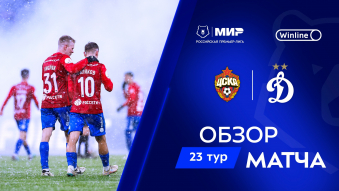On 22 April 2017, St. Petersburg Stadium - now Gazprom Arena - was opened with a match between Zenit St. Petersburg and Ural Ekaterinburg.
First match: A decade of waiting
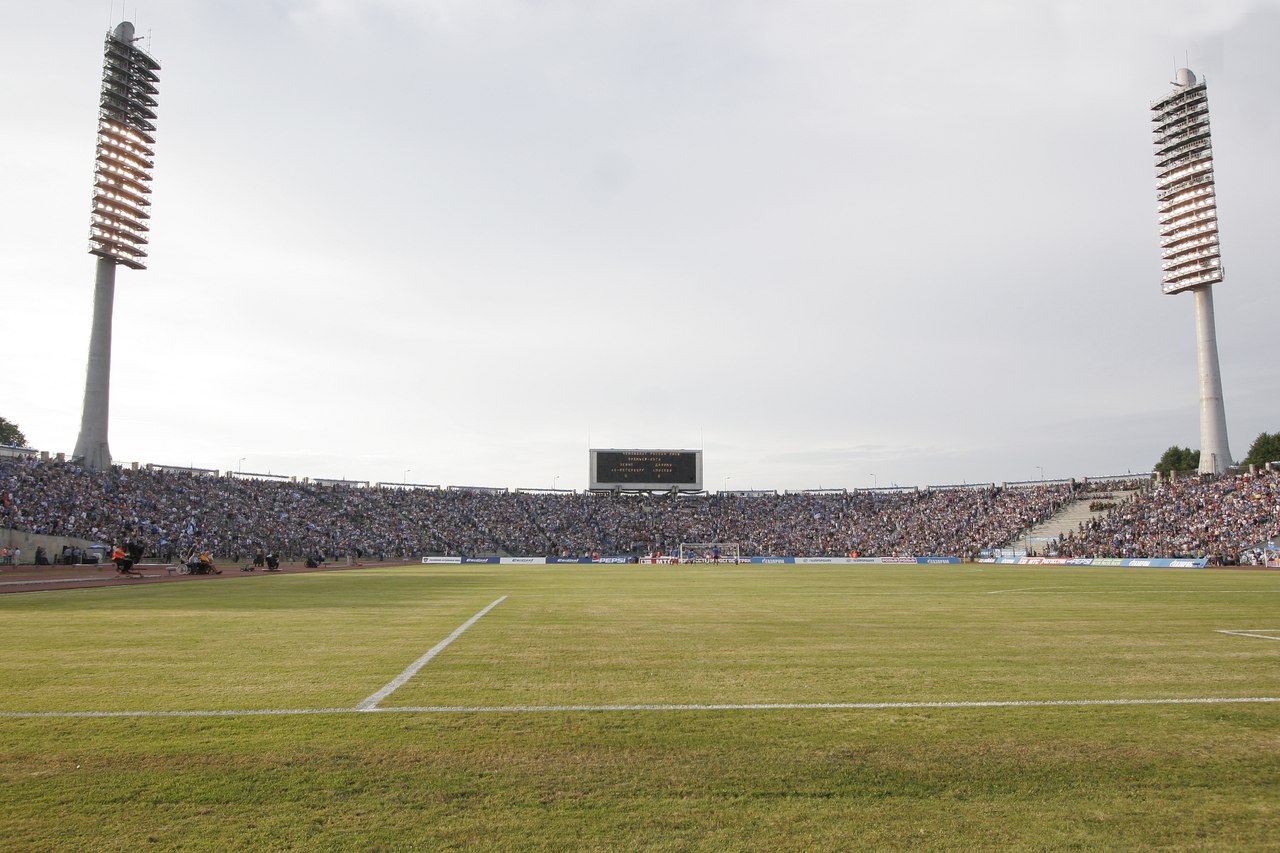
Twelve years before this match, on 17 April 2005, the Governor of St. Petersburg, Valentina Matvienko, and the Chairman of the Board of Gazprom, Aleksey Miller, announced that Zenit would build a new arena on the site of the Kirov Stadium on Krestovsky island. The Blue-White-Sky Blues played there from the 1950s to the 1990s, and in 2006 they returned for a farewell match and drew 0-0 with Dynamo Moscow.
Construction of the arena began in 2007. Due to the redesign to meet FIFA criteria and the change of general contractors, the date of the first game was delayed from March 2009 by eight years. In December 2016, the stadium was put into operation and in the spring hosted two Zenit RPL matches - a 2-0 win over FC Ural on 22 April and a 1-0 defeat to Terek Grozny (since renamed Akhmat Grozny) on 7 May.
During the 2017 Confederations Cup and 2018 FIFA World Cup, it was called St. Petersburg Stadium, and after the World Cup it was renamed Gazprom Arena. At the end of 2018 and 2019, it hosted hockey matches: Russia vs Finland (Eurotour) and SKA vs CSKA (KHL). In 2021, the arena will return to its previous name and host the final of the Champions League, as well as four games of the European Championships.
Most memorable RPL match: Zenit 5-1 Spartak Moscow (6 August 2017)
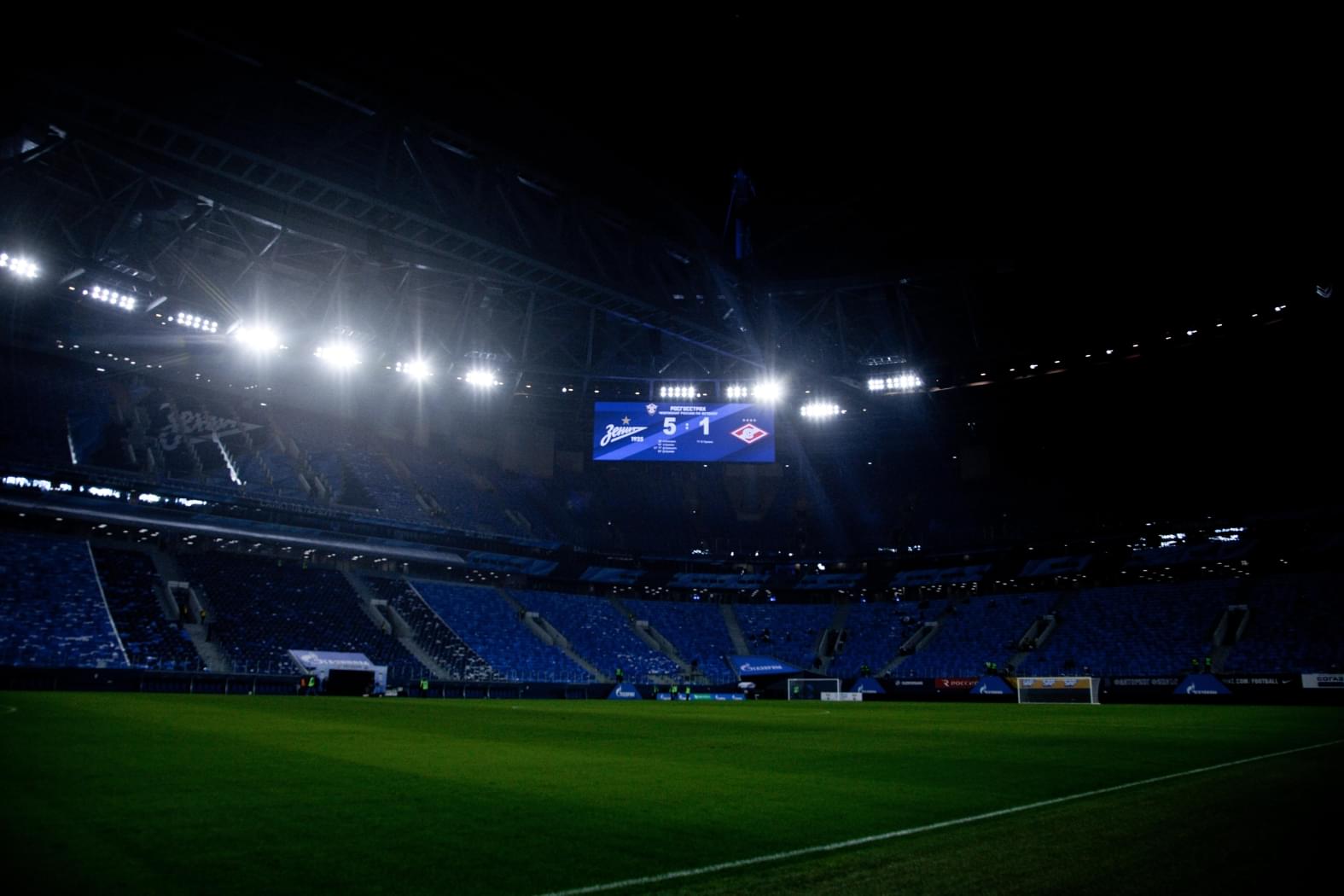
The defeat by FC Terek in the spring of 2017 effectively crowned Spartak Russian champions, and three months later the Red and Whites arrived at the new Zenit stadium in this status. Roberto Mancini had started powerfully in St Petersburg, however, taking nine points in the opening three matchdays. He did not spare his compatriot Massimo Carrera.
Aleksandr Kokorin and Aleksandr Erokhin scored in the first half, while in the second Zenit were even more devastating thanks to Domenico Criscito, Daler Kuzyaev and an own goal by Artem Rebrov. The visitors pulled back a consolation when Quincy Promes converted a penalty. Five goals from Zenit against their main rivals even inspired an original song by Leningrad frontman, Sergey Shnurov.
Zenit were top until the autumn meeting with future champions Lokomotiv Moscow. A 3-0 loss to the Railwaymen deprived the blue-white-sky blue team of top spot, and they finished the season fifth. Spartak finished higher, in third place.
Most memorable 2018 World Cup match: Russia 3-1 Egypt
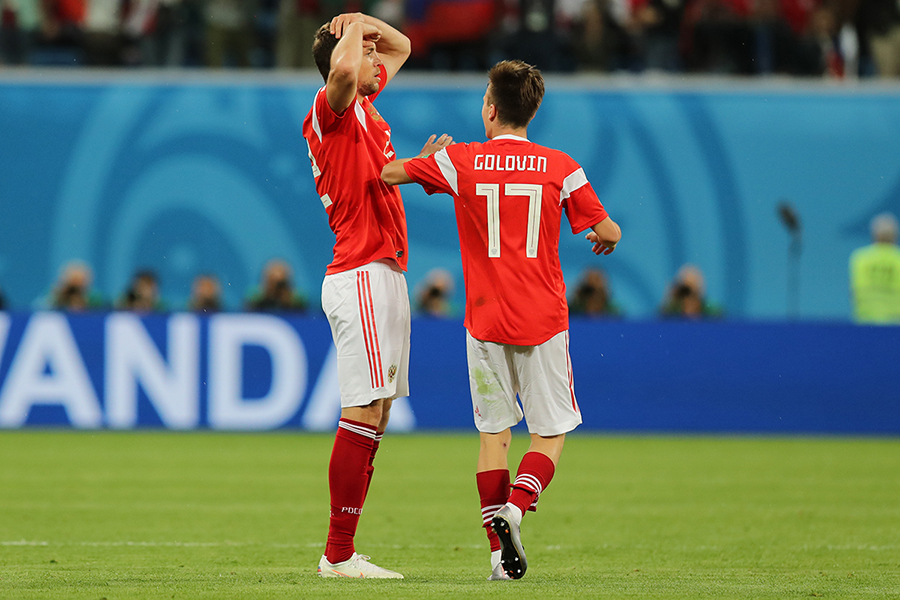
Stanislav Cherchesov's team arrived at St. Petersburg stadium after having thrashed Saudi Arabia 5-0 in the opening match of the tournament. "In St. Petersburg, we need to write new history, and I hope we can do it. We took a small step towards our first goal, but this is only the first step," said the Russian national team manager on the eve of the meeting with Egypt.
This goal - reaching the knockout stages - was fulfilled by the tournament hosts. After a goalless first half, they scored three goals in 15 minutes: Cherchesov's team took the lead thanks to an own goal from Ahmed Fathi, then Denis Cheryshev and Artem Dzyuba scored. The visitors responded only with a converted penalty from Mohamed Salah, who had just recovered from injury in the Champions League final. After this victory, fans in Russia were up all night.
"A work of sports art"
The first goal at the new stadium was scored by Branislav Ivanovic, who had moved to Zenit from Chelsea two and a half months earlier. "I have played in many arenas, and I can say that this stadium is of a very high class. When it is fully ready, in such an arena you will need to play for fun and win,” the Serbian defender said after the game against FC Ural.
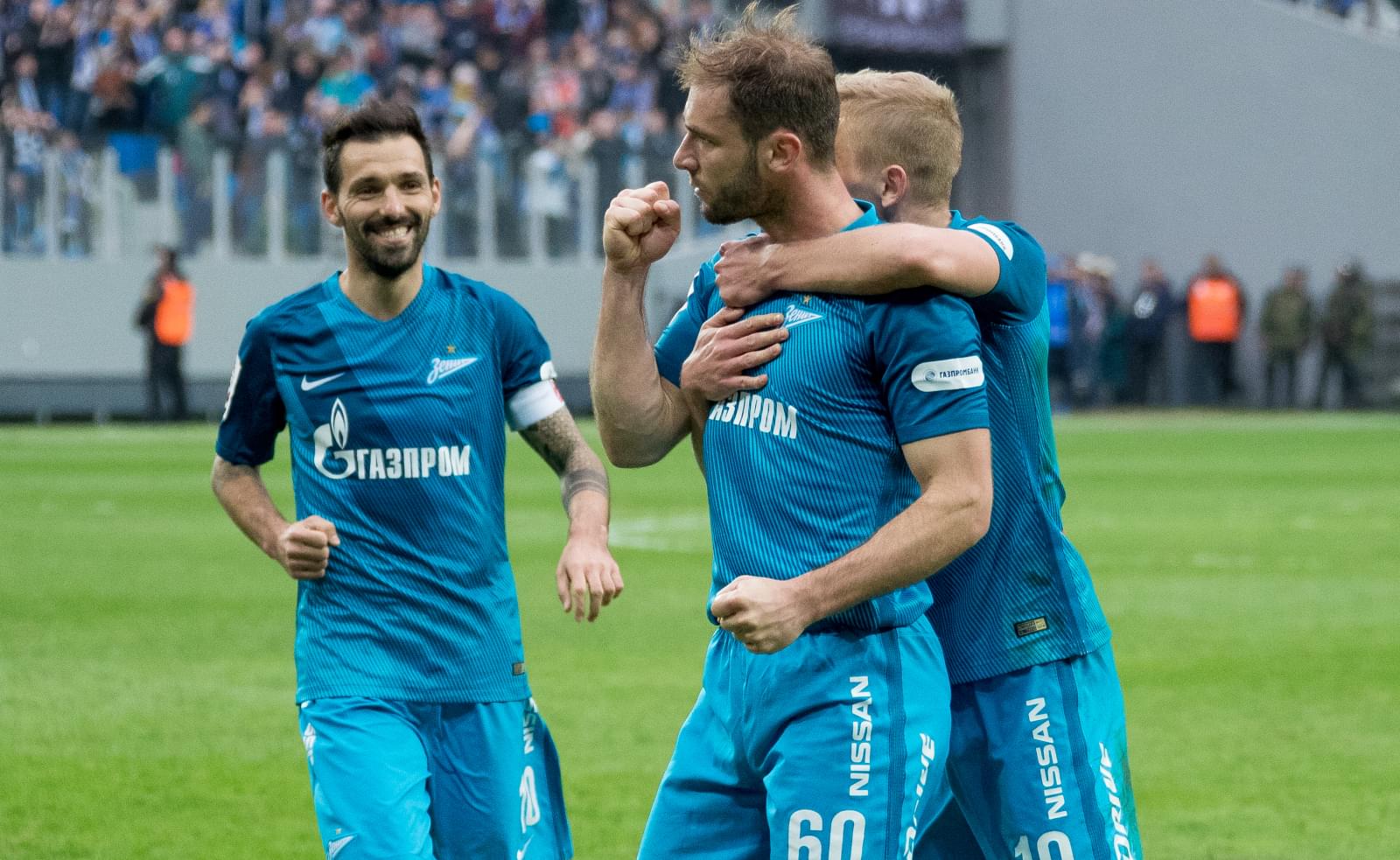
His teammate Mikhail Kerzhakov had experienced Kirov stadium - he studied at the Zenit academy in the 2000s and played for the reserve team - but he’d never actually been to the old arena. "While I was playing for other clubs, I heard out of the corner of my ear that the construction wasn’t meeting deadlines, that they were shifting," said the goalkeeper. “When I first visited the stadium, it seemed to be on a very large scale.
“Of course, I liked the roof, it is much more pleasant to play with it. At the Petrovsky gales would blow through, even if the temperature was above zero, so it was still very cold. The roof is a huge plus. I also notice the large capacity, which was especially felt at the Spartak game; there were just under 60 thousand spectators. Now the dressing room has been renovated and updated in a very cool way, and I like it.
“The first time I played here against FC Rostov, when I was taking my nephew to the field, I had a great desire to play in this arena. When I was sitting in the reserves, I kept thinking, can I do it or not? And in the first game we won heavily, and Rostov were leaders at the time. The emotions were special. But the most memorable game was against Spartak: the performance and everything else that turned around - it was great."
The arena was also admired by opponents of Zenit and the Russian national team. "This is a work of sporting art," Spain's head coach, Julen Lopetegui, said in November 2017 after a friendly match.
"The new stadium in St Petersburg is really impressive!” RB Leipzig CEO Oliver Minzlaf exclaimed when his team played in St. Petersburg in the last-16 match of the 2017/18 Europa League. “It is also important to have a roof, given the cold weather outside the arena. It is difficult to say what can be added to this stadium - it already has everything. Everyone can find everything they need in this arena."
"To create a stadium that matches the potential of St. Petersburg"
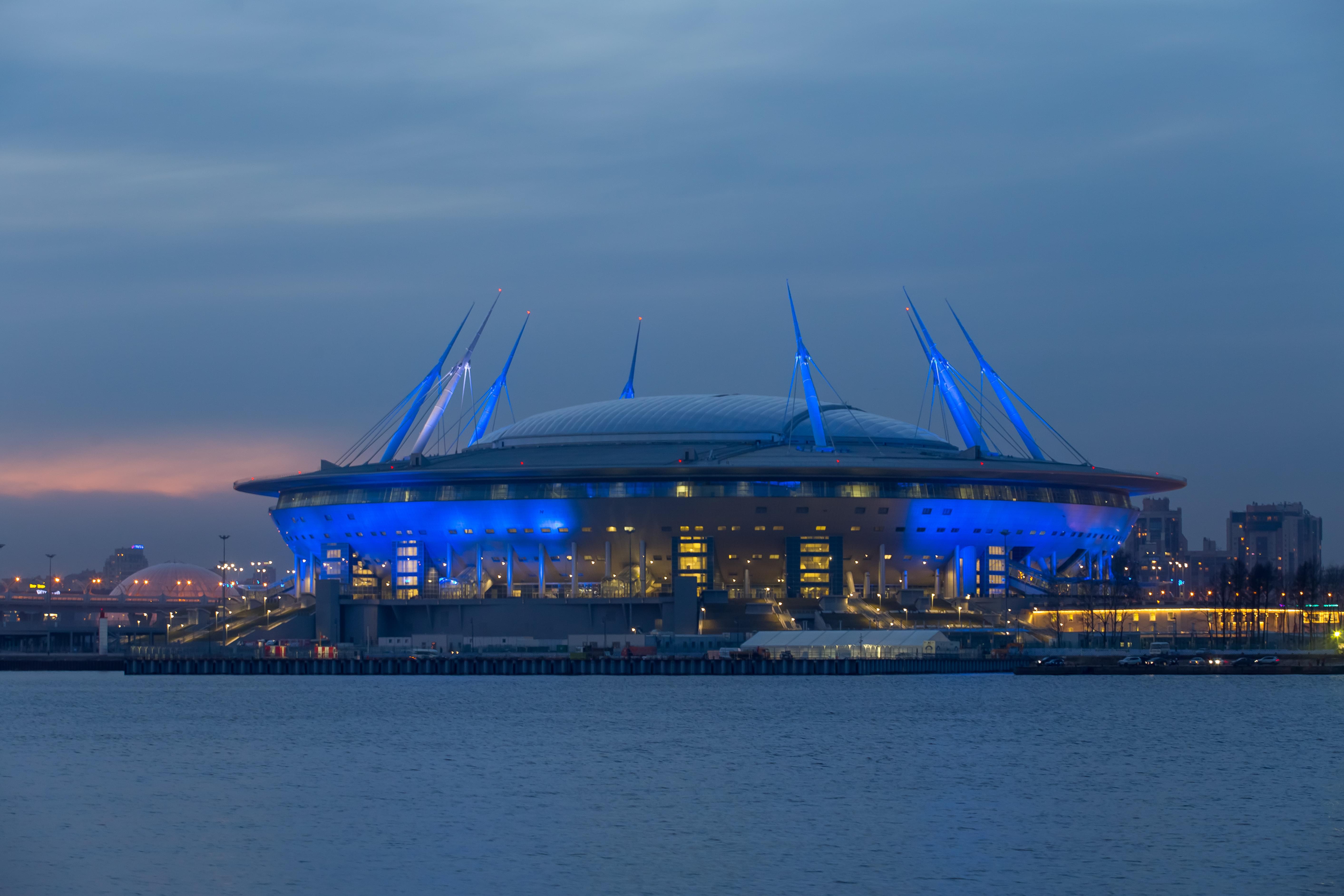
In 2006, the stadium project was chosen from the proposals of five companies: two were Russian, the others from Germany, Portugal and Japan. The best option was considered a ‘spaceship’ with a sliding roof and a roll-out field, which was presented by the Japanese Kisho Kurokawa.
This was not the first football stadium that he had designed - with his participation for the 2002 World Cup, an arena was built in the Japanese city of Oita. However, Kurokawa did not live to see the idea realized in St. Petersburg: the architect died in October 2007, when he was 73 years old. One of his assistants, Yuji Imayo, visited the stadium when it was built.
"Today, many people note the similarity of the arena to a spaceship, which is quite interesting, since initially Kurokawa did not set such a task," he said in April 2018. "The idea was to create the most technological and modern stadium that would match the potential of St. Petersburg. Of course, such an object should look appropriately, as if it came to us from the future. I think we succeeded.
“In addition, the city government gave us the task of fitting the object into the landscape of the island in such a way that it does not violate the sea view and fits in with the highway. It was already known that a road would be built around the stadium.
Kurokawa took into account all these requirements, combined the solutions of the tasks set together and presented the stadium design to the city authorities. This is how St. Petersburg stadium appeared."
The article uses quotes from an interview with the official website of Zenit.
Photos by Zenit Football Club and Football Union of Russia
 Российская премьер-лига
Российская премьер-лига
 News
News 


